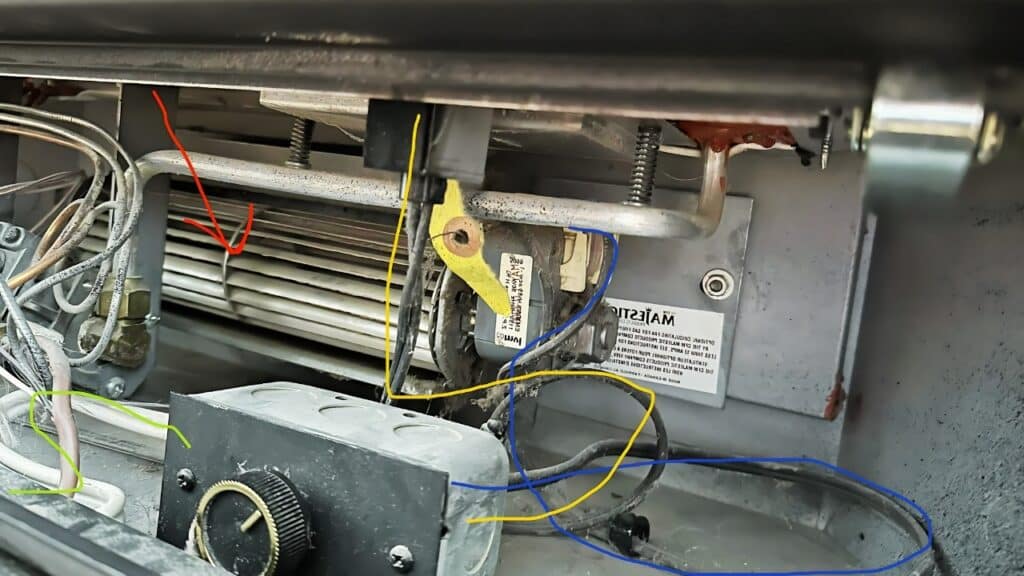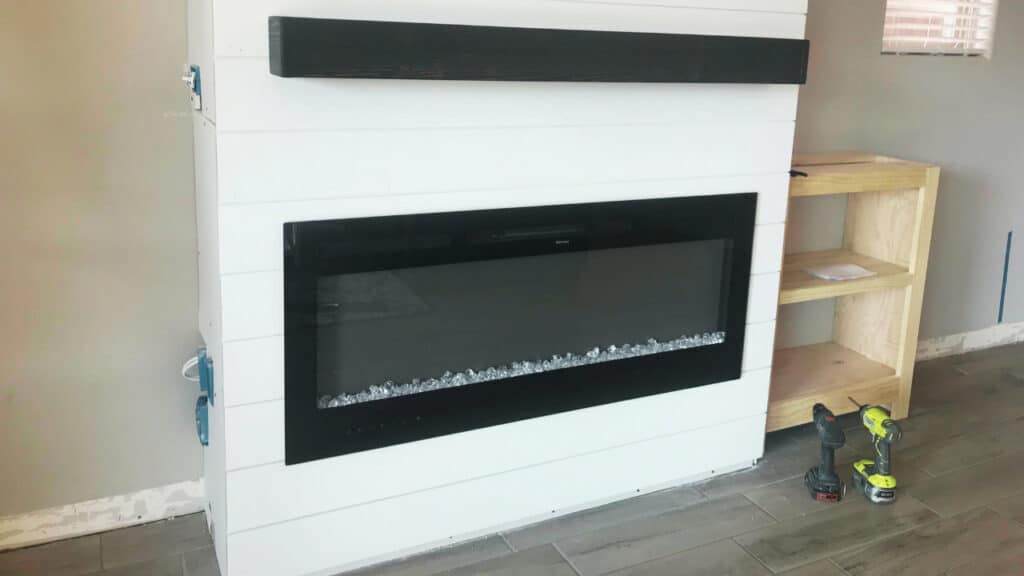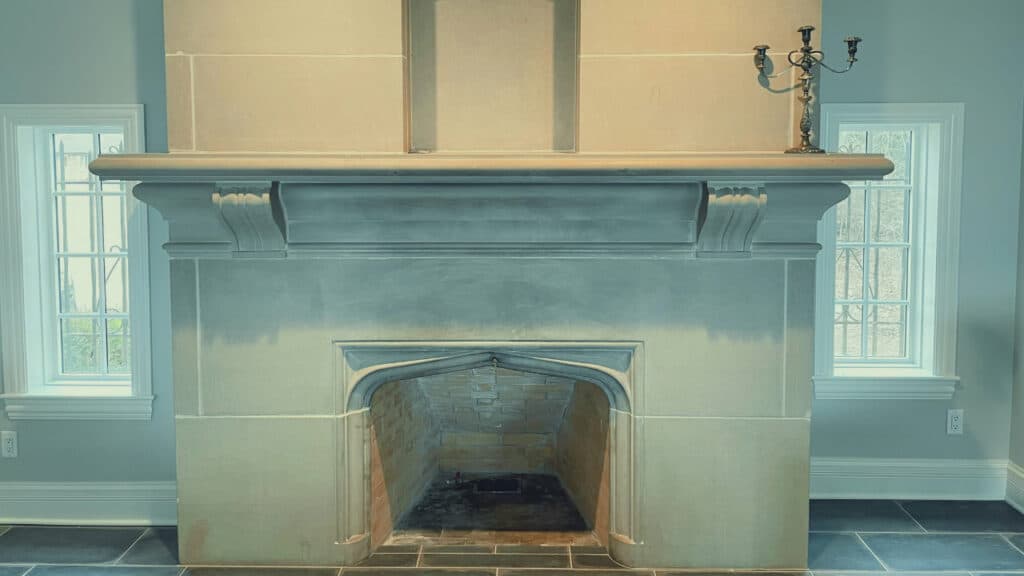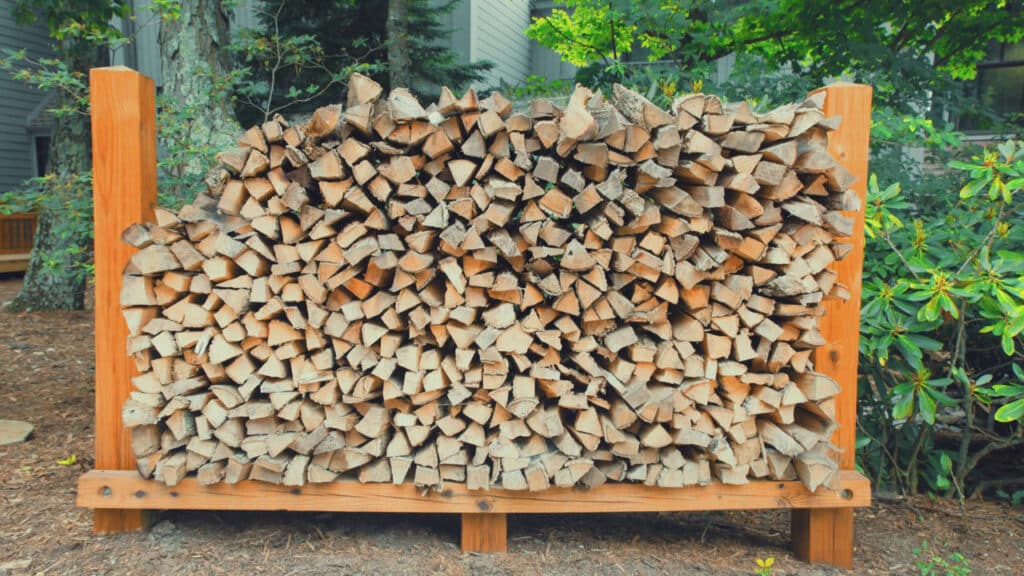Nothing quite beats the cozy ambiance of a propane fireplace on a chilly evening—until it refuses to light. If you’ve found yourself staring at an unresponsive flame, frustration can quickly set in.
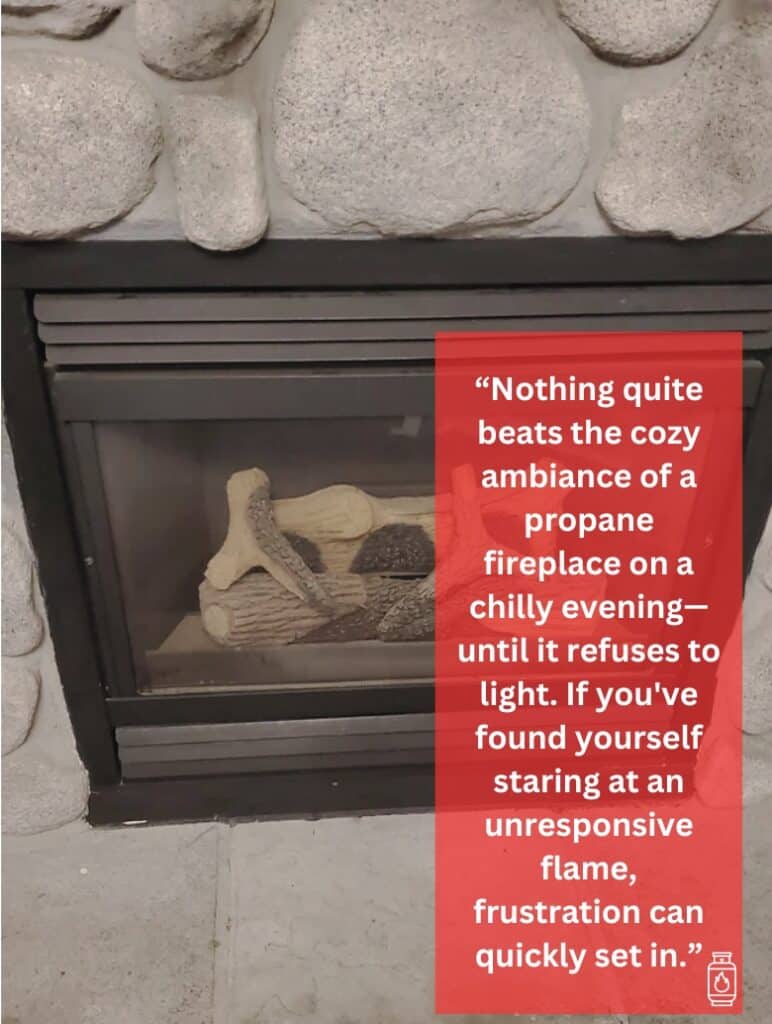
Your propane fireplace refusing to light isn’t just an inconvenience; it’s a puzzle waiting to be solved. In this guide, we’ll walk you through the mysteries behind your uncooperative fireplace and provide you with practical solutions to reignite that warm glow.
From common troubles to lesser-known issues, we’ll explore the six main reasons why your propane fireplace won’t light.
Reasons Why Your Propane Fireplace Won’t Light
Let’s look into the specific reasons your propane fireplace won’t light.
1. No Gas Flow
A fireplace needs a continuous flow of propane gas to ignite and burn. Without a steady stream of propane, your fireplace is essentially a fancy fireless box. Here’s how to diagnose and fix a lack of gas flow:
- Closed Gas Valve: The most basic reason is that someone (maybe you!) accidentally turned off the gas valve.
- Empty Propane Tank: Even the most impressive fireplace can’t conjure flames from thin air.
- Clogged Gas Line: Debris or rust buildup in the gas line can restrict gas flow.
- Regulator Problems: The regulator is the pressure control center for your propane system. A faulty regulator can prevent proper gas flow.
Here’s what to do after identifying this problem:
Solution #1. Check the Gas Valve
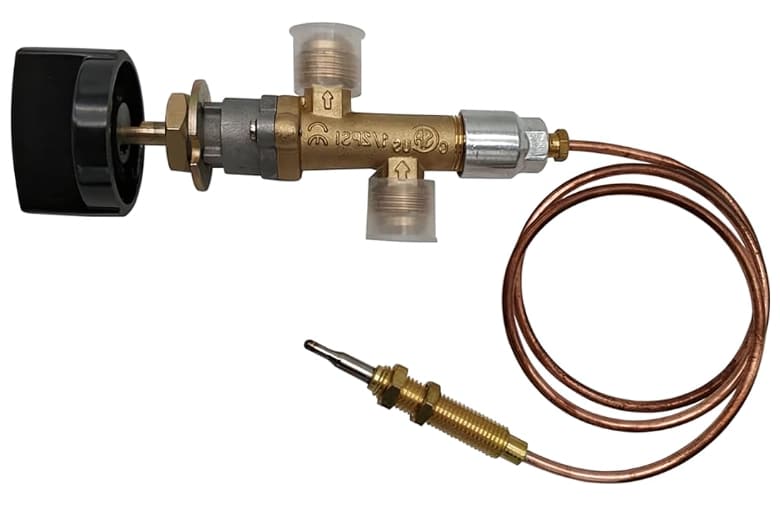
This might seem obvious, but it’s a quick and easy check! Locate the gas valve near your fireplace or propane tank. Make sure it’s turned fully open, typically indicated by the handle being parallel to the gas line.
Solution #2. Refill Propane Tank
If the gas valve is open, head outside to your propane tank. Look for a gauge or level indicator to check the tank’s fill level. If it’s running low, contact your propane supplier for a refill.
Solution #3. Clean Gas Line (Important Safety Note)
While this might be a DIY project for the handy homeowner, it’s important to prioritize safety. If you’re not comfortable working with gas lines, call a qualified technician.
If you do decide to tackle it yourself, turn off the gas valve completely and consult your fireplace manual for specific cleaning instructions. Generally, compressed air can be used to gently blow out any debris in the line.
——
Do You Need to Hire Chimney & Fireplace Expert?
Get free quotes from qualified experts near you. No commitment required!
——
2. Ignition and Pilot Light Problems
Even if you have a steady flow of gas, there might be issues with the spark that ignites the pilot light, or the pilot light itself, keeping your fireplace from turning on.
The pilot light is a small flame that continuously burns, ready to ignite the main gas burner when you turn on the fireplace.
Here are some of the main reasons behind pilot light and ignition issues:
- Dirty Pilot Light: Over time, dust, dirt, and cobwebs can accumulate around the pilot light orifice, hindering proper gas flow and ignition.
- Malfunctioning Thermocouple: The thermocouple is a safety device that senses heat from the pilot light. If the pilot light goes out, the thermocouple shuts off the gas supply to prevent a leak. A faulty thermocouple might not sense heat even when the pilot light is lit, preventing the main burner from igniting.
- Faulty Ignition System: If you have a spark igniter system, it might not be creating a spark due to worn-out components or debris build-up. Also, a standing pilot system might have a clogged gas line or a malfunctioning pilot light assembly.
Here’s what you can do about these issues:
Solution #1. Clean the Pilot Light

Always refer to your fireplace manual before attempting any maintenance. Once you’ve shut off the gas valve and ensured the fireplace is cool, use a small brush to gently clean any dust or debris around the pilot light assembly. You can also try to suck the debris and dust from the pilot hood assembly with a vacuum.
If cleaning doesn’t suffice and the pilot light exhibits persistent signs such as weak flames or frequent extinguishing, it may require repair gas fireplace services for optimal outcomes.
Solution #2. Replace the Thermocouple
A faulty thermocouple needs to be replaced. While this might be a manageable DIY project for some, it’s advisable to consult a qualified technician, especially if you’re not comfortable working with gas appliances.
Solution #3. Replace the Gas Valve
Similar to the thermocouple, replacing a gas valve is often best done by a professional. If you suspect a faulty valve, it’s crucial to have a licensed technician diagnose and fix the issue to avoid potential gas leaks.
3. Burner Won’t Light
The main burner is the heart of the heating action in your fireplace. If it’s not igniting, you won’t get that warm and cozy ambiance, and here are some of the reasons why that might happen:
- Dirty Burner: Just like the pilot light, the main burner can accumulate dust, debris, or even cobwebs over time, preventing proper gas flow and ignition.
- Faulty Ignition Switch: The ignition switch is responsible for sending the spark to ignite the gas at the burner. If your gas fireplace switch won’t work, there will be no spark and no flame.
- Clogged Burner Ports: These are the small openings in the burner where the gas flows out to create the flames. Blockages from dirt, corrosion, or spiderwebs can disrupt the gas flow and prevent a proper flame.
Solutions to the problems:
Solution #1. Clean the Burner
Make sure the fireplace is completely off and cool before attempting any cleaning. Consult your fireplace manual for specific instructions on accessing and cleaning the burner.
This may involve removing the logs and using a soft brush or compressed air to gently remove any debris from the burner and surrounding areas.
Solution #2. Replace the Ignition Switch
Replacing the ignition switch can be a more complex task. If you’re not comfortable with electrical work, it’s best to call a qualified technician.
Solution #3. Clear Burner Ports
Similar to cleaning the burner itself, be sure the fireplace is off and cool. Gently use a thin wire pipe cleaner or compressed air to clear any visible blockages from the burner ports.
Avoid using harsh chemicals or shoving anything forcefully into the ports, as this could damage them. If the blockage seems extensive, or you’re uncomfortable with this step, seek help from a professional.
4. Strange Smells
While the appeal of a crackling fire is irresistible, unpleasant odors coming from your fireplace are definitely not part of the package. Let’s identify some potential causes of these funky smells.
- Gas Leak: Natural gas, the main component of propane, is odorless, but for safety reasons, a harmless chemical with a strong rotten egg smell is added. If you notice a smell reminiscent of rotten eggs, it could be a sign of a gas leak, requiring immediate attention for safety.
- Dirty Burner: As mentioned earlier, a dirty burner can accumulate dust, debris, or even dead insects. A fishy or decaying smell might indicate the presence of decomposing organic matter, such as rodents or insects.
- Blocked Chimney: A gas fireplace’s venting system is designed to expel fumes directly outside. If you smell something strange when operating your gas fireplace, it’s best to turn it off and investigate further.
This is what you need to do:
Solution #1. Check for Gas Leak
If you smell rotten eggs near your fireplace, turn off the gas valve immediately and evacuate your home. Open windows and doors to ventilate the area.
Do not turn on any lights or appliances, and call your propane supplier or a qualified technician to investigate the leak.
Solution #2. Clean Burner
Turn off the fireplace completely and allow it to cool. Refer to your fireplace manual for specific instructions on accessing and cleaning the burner. A soft brush or compressed air can usually remove debris.
Solution #3. Clear Venting Blockage
It’s important to have a qualified technician inspect and service your gas fireplace annually. This routine maintenance can ensure the safe and efficient operation of your gas fireplace.
5. Electrical Issues
While propane fuels the fire, your fireplace also relies on some basic electrical components to function properly. As a result, electrical issues can disrupt the delicate dance between gas flow and ignition in your propane fireplace.
Here are some of the reasons for electrical issues:
- Thermocouple/Thermopile Failure: These components sense heat from the pilot light and use this to generate a small electrical current. This current, in turn, signals the gas valve to be open and allows gas to flow to the burner. If the thermocouple or thermopile fails, this critical communication link is broken, preventing the fireplace from igniting.
- Power Supply: A disrupted power supply can cause problems for fireplaces that use electricity for ignition or control systems.
Solutions to the problems:
Thermocouple/Thermopile Replacement
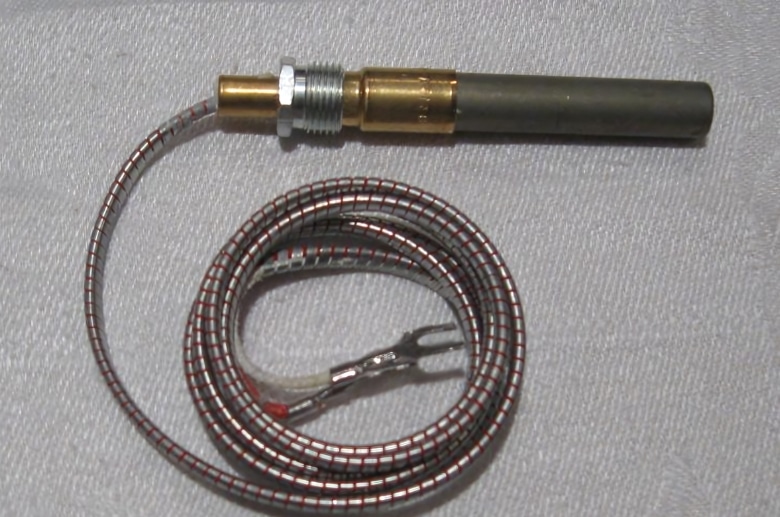
Replacing these components is generally not a DIY project. The thermocouple or thermopile needs to be properly positioned and tested by a qualified technician to ensure safe and efficient operation.
Check Power Supply
If your fireplace uses a wall switch or remote control, ensure it is functioning correctly. For wall switches, check your circuit breaker panel and see if the breaker controlling the fireplace has tripped.
If necessary, reset the breaker, but if it trips repeatedly, consult an electrician. You can also test the wall switch by removing it from the wall and detaching the wires from the switch.
Afterward, carefully touch the wires together (important note: only a qualified electrician should perform this test due to the potential electrical hazards involved). If the fireplace ignites with the wires bypassed, it indicates a problem with the switch itself.
——
Do You Need to Hire Chimney & Fireplace Expert?
Get free quotes from qualified experts near you. No commitment required!
——
6. Thermostat and Remote Control
Modern propane fireplaces often incorporate thermostats and remote controls for added convenience. While convenient, these features can also introduce potential roadblocks to a roaring fire.
Here’s how:
- Thermostat Malfunction: If your fireplace is equipped with a thermostat, it might be set to a temperature too low to ignite the fireplace. Additionally, the thermostat itself could be malfunctioning and sending incorrect signals.
- Remote Control Issues: There are a couple of common culprits for remote-controlled fireplaces. The remote’s batteries might be dead, or it might need to be reprogrammed if its connection to the fireplace receiver is lost.
The best ways to approach these issues are:
Check Thermostat Settings
Ensure your thermostat is set to a temperature high enough to trigger the fireplace to ignite. If it’s set correctly, consult your fireplace manual for troubleshooting steps related to the thermostat, or consider contacting a qualified technician for further diagnosis.
Troubleshoot Remote Control
First, replace the batteries in the remote with fresh ones. If that doesn’t solve the problem, consult your fireplace manual for instructions on reprogramming the remote control to the fireplace receiver.
If reprogramming fails, a technician might be needed to investigate the remote or receiver.
If you’re not comfortable with any step or suspect a gas leak, always stay on the side of caution and call a qualified professional.
Conclusion
We’ve explored the six most common reasons why a propane fireplace won’t light and provided DIY solutions to get that flame flickering again.
Here are some final tips for maintaining your propane fireplace:
- Schedule annual cleaning and inspections by a qualified technician.
- Turn off the gas supply valve when the fireplace isn’t in use.
- Replace batteries in thermostats and remote controls regularly.
- Keep the fireplace area clear of flammable objects.
By following these tips and addressing minor issues promptly, your propane fireplace will be a safe and cozy source of warmth for your home for years to come.

